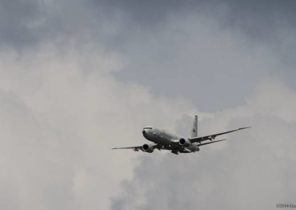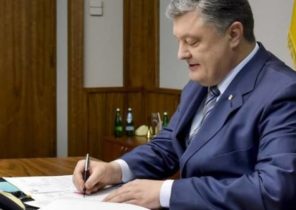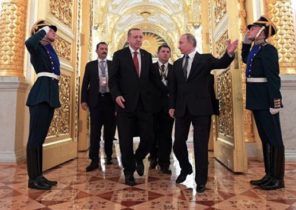
Artillery rockets accompanied the Russian army from Syria to the Crimea, in distant countries and in the so-called near abroad. Light and can turn enemy fortifications into rubble, these missiles emit a terrible howl, rushing towards their goals. As weapons in the war Russia is using artillery rockets for almost a hundred years, since the era of Stalin.
The Soviet Union paid great attention to science and technology development and global research of the 1930-ies, most likely, prompted Soviet engineers to see the missile is a powerful weapon. In 1931 in the Soviet Union was designed unguided missiles RS-132 air-to-air. Unlike cannon shells, the missiles could be launched without a guide, with the result that the accuracy of the blows of missiles RS-82 and RS-132 was quite low — the error was about one degree. When shot at close range, this error affected the result too much, but with increasing distance inaccuracy has grown exponentially.
In 1938, the red army entered system field rocket launchers BM-13 (“combat vehicle”). From BM-13 24 rail guides were installed on the platform of a three-axle truck ZIS-6. Shot the BM-13 rockets M-13. Each shell M-13 was 132 mm in diameter, was equipped with a warhead weighing 5 pounds and had a range of impact 8.4 kilometer.
Ability to lead a massive fire was the main advantage of the BM-13. Eight BM-13 just a few seconds could produce about a ton of high explosive substances. But missiles launched from ground installations, had its drawbacks. Reloading required a lot of time: to recharge one BM-13 was required about an hour. Although the design of these cars were made some changes to increase the accuracy of shooting, they still were totally unsuitable for hitting point targets and was used mainly to weaken enemy positions in front of the Soviet offensive.
BM-13 was adopted shortly before operation Barbarossa, the German invasion of the Soviet Union and served him throughout the war. These rocket launchers were pretty easy to manufacture: there is generally used an American Studebaker trucks received under lend-lease, which were installed on a platform with a rail guide. Artillery boats, trains, tanks and other vehicles also came to install them the system run M-13.
The Soviet Union continued to use artillery and missiles in the postwar era. During the cold war the main artillery system was the BM-21 “Grad”. At the “Castle” 40 122-mm rocket guns mounted on the truck Ural-375Д. It was created more than 11 thousand “Hail”, part of which was taken by the Soviet army, and part was sold to clients of the Soviet Union around the world.
“Castle” had a number of advantages compared to their military predecessors. The hydraulic mechanism of the breech of the launch tube and the rest of the truck has allowed to increase accuracy and stability. Like rifle barrels, launch tube BM-21 was threaded in order to achieve stabilizing rotation of the projectile and, thus, to increase the accuracy. The launch tube can be lifted vertically up to 55 degrees, which increased the range to 20 kilometers.
Systems “Grad” was developed several missiles. The most common projectile was 9M22U, which had a warhead weighing 20 kilograms — three times more than the BM-13. Anti-tank mines, high-explosive shells, tracer and smoke shells have improved the efficiency of rocket artillery both in attack and in defense.
In the 1960s the Soviet Union began to develop larger rockets. One of them was “Hurricane”, which is installed on the chassis of truck ZIL-135. “Hurricane” has six 220-mm missiles whose range reaches up to 34 kilometers. In addition to warheads that were available for the BM-21, “Uragan” could launch anti-tank and anti-personnel missiles, and thermobaric missiles. Thermobaric missiles allow you to create a cloud of flammable fuel, which then explodes, causing a rise in pressure and temperature can be fatal to the forces of the enemy as in the open areas, and fortifications. Larger, more mobile missile system BM-30 “Smerch” can produce 12 300-mm rockets to a distance of 88 kilometers. The unique “Tornado” is in the fact that he is able to launch reconnaissance drones 9М534.
One of the most unusual and deadliest missile systems in the Soviet Union (and then Russia) was and still is a heavy flamethrower system TOS-1A. Unlike the previous missile system TOS-1A was developed so that it could conduct direct fire, releasing 24 220-millimeter rockets at targets within line of sight with ballistic computer, which calculates the point of aim. As a means to engage targets within direct line of sight, the TOS-1A is especially effective when she shoots thermobaric rounds. One salvo TOS-1A can destroy all on a plot of approximately 200 to 400 metres. Unlike other systems TOS-1A must operate in conditions of enemy fire, so it is installed at the base of the armored T-72 tank.
Russia’s actions in Eastern Ukraine and in Syria involved the use of artillery missiles — even more so than the traditional cannon artillery systems. The Russian army and their agents was not only used missile and artillery systems, but the drones that have served to define the objectives. According to some reports, the Ukrainian military managed to establish several types of drones, the appearance of which inevitably entails missile and artillery strikes by the Russian military and their supporting militias. The Syrian army uses Grad, and in 2014, according to some reports, she received several systems “Smerch”. TOS-1A “city” was used by the Syrian and Russian military in Syria and anti-government rebels in Ukraine. Any country which would conflict with Russia, its clients or agents, now or in the near future, most likely, will feel the deadly effect of the Russian artillery.







